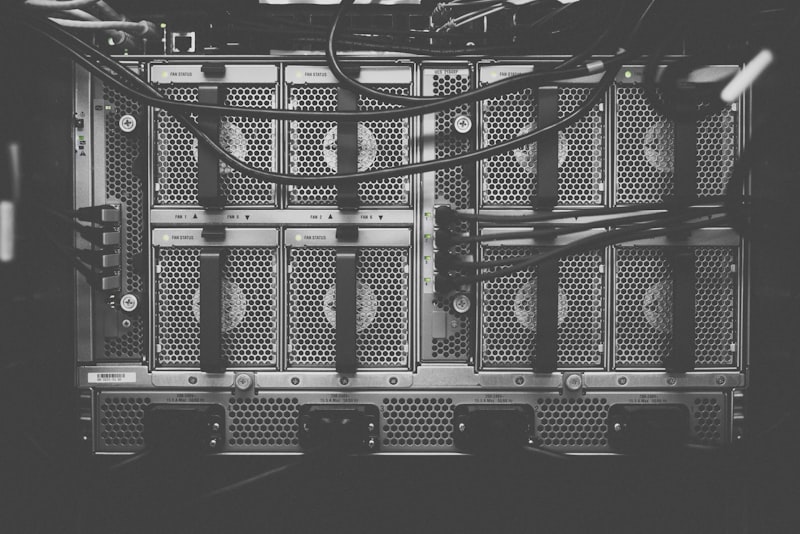What Are the Most Innovative Technologies for Water Conservation?
- Smart Irrigation Systems: Picture irrigation systems that can sense soil moisture, weather conditions, and even plant water needs in real-time. These systems adjust watering schedules automatically, ensuring plants receive just the right amount of water, minimizing waste significantly.
- Rainwater Harvesting: Have you ever thought about capturing rainwater and using it for non-potable purposes like gardening or washing? Rainwater harvesting systems do just that. They collect rainwater from roofs and store it in tanks for later use, reducing dependency on freshwater sources.
- Greywater Recycling: Ever wondered where the water from your shower or washing machine goes? Greywater recycling systems treat this water so it can be reused for tasks like flushing toilets or irrigating landscapes. It’s a smart way to make the most of water that would otherwise go to waste.
- Desalination Technology: In regions facing freshwater shortages, desalination comes to the rescue. This process removes salt and impurities from seawater, turning it into freshwater suitable for drinking and agriculture. While energy-intensive, advancements in desalination technology are making it more efficient and accessible.
- Leak Detection Systems: Water leaks can be silent culprits of water wastage. Advanced leak detection systems use sensors and data analytics to pinpoint leaks in real-time, helping to prevent water loss and reduce utility bills.
- Nano Filters: Imagine filters so fine they can remove contaminants at the molecular level. Nano filters use nanotechnology to purify water, making it safe to drink even in challenging environments where traditional filtration methods fall short.
- AI and Data Analytics: Artificial Intelligence (AI) is revolutionizing water management. AI algorithms analyze vast amounts of data from sensors and weather forecasts to optimize water usage, predict demand, and detect anomalies, ultimately conserving water resources more effectively.
Drip by Drip: How Smart Irrigation Systems Are Revolutionizing Water Conservation

Picture this: your garden is like a well-choreographed dance where each plant gets its own personalized hydration routine. Sensors in the soil detect moisture levels, sending signals to the system which then calculates how much water is needed. It’s like having a personal assistant for your plants, ensuring they thrive without the guesswork.
But the benefits of smart irrigation systems extend beyond just efficient watering. They contribute significantly to conserving water resources on a larger scale. By reducing water wastage, these systems play a crucial role in sustainable agriculture and landscaping practices. They align perfectly with global efforts to combat water scarcity and promote environmental stewardship.
Moreover, smart irrigation isn’t just for large farms or commercial landscapes anymore. Homeowners and small-scale gardeners are increasingly adopting these systems to save water and lower their utility bills. It’s a win-win situation where technology not only simplifies our lives but also helps us become better stewards of our environment.
In essence, smart irrigation systems are the future of water conservation. They represent a shift towards more efficient, sustainable practices that benefit both our immediate surroundings and the planet as a whole. As we continue to innovate and integrate technology into everyday life, these systems remind us that small changes can have a big impact, drip by drip.
From Air to Tap: Innovations in Atmospheric Water Generation Technology

One of the key components of AWG technology is the use of high-efficiency filters and condensers. These devices are designed to capture moisture from the air, filter out impurities, and produce water that meets drinking standards. This means you can have peace of mind knowing that the water generated is safe and clean, ready to quench your thirst without the need for further purification.
The applications of Atmospheric Water Generation are vast and impactful. From providing water in remote locations with limited access to clean water sources to offering a sustainable solution in disaster-stricken areas, AWG technology is a game-changer. It reduces dependency on traditional water sources, alleviates pressure on groundwater reservoirs, and contributes to environmental conservation efforts.
Moreover, AWG technology is not just limited to large-scale applications. There are now portable and household devices available that bring the power of atmospheric water generation into your home or on the go. Imagine having a device in your kitchen that continuously produces fresh water from the air, ensuring your family always has access to clean drinking water.
Atmospheric Water Generation technology represents a leap forward in water sustainability and accessibility. By harnessing the moisture present in our atmosphere, this innovative technology provides a reliable source of clean water where it’s needed most. As we continue to face challenges related to water scarcity and quality, AWG technology offers a promising solution for a more sustainable future.
Beyond the Flush: The Latest Advances in Water-Efficient Toilets
Picture this: you’re in a hurry, you flush, and that’s it. No wastage, no guilt about excessive water use. That’s the magic of water-efficient toilets. They’re designed to use significantly less water per flush compared to traditional models, without compromising on performance. It’s like upgrading from a gas-guzzling SUV to a sleek electric car—same job, less resource consumption.
How do they work? These toilets typically feature advanced flushing systems that optimize water flow and pressure. Some use dual flush mechanisms, offering a choice between a full flush for solid waste and a partial flush for liquid waste. This flexibility not only saves water but also reduces your utility bills over time. It’s a win-win for your wallet and the environment.
Beyond functionality, water-efficient toilets are also aesthetically pleasing and come in various designs to suit any bathroom décor. Whether you prefer a modern, minimalist look or a classic, elegant style, there’s a water-efficient toilet that fits your taste.
But it’s not just about looks and efficiency; it’s about making a meaningful impact. By installing a water-efficient toilet, you’re contributing to water conservation efforts on a global scale. Think of it as planting a tree every time you flush—small actions that add up to significant changes for our planet.
So, next time you’re considering a bathroom upgrade, think beyond the flush. Embrace the latest advances in water-efficient toilets and join the movement towards a more sustainable future. Because when it comes to saving water, every drop—and flush—counts.
Harnessing Nature: Biofiltration Systems Redefining Urban Water Management
Imagine strolling down a city street where trees not only provide shade but also act as guardians of water purity. Biofiltration systems ingeniously mimic natural processes, using vegetation and soil to filter pollutants from stormwater runoff. It’s like giving nature a high-tech upgrade, where every leaf and root plays a crucial role in cleansing rainwater before it reaches our rivers and oceans.
Why does this matter? Because traditional methods of managing urban runoff often involve channeling it directly into sewers or rivers, carrying with it a toxic cocktail of chemicals, trash, and debris. Biofiltration systems offer a sustainable alternative, reducing pollution and replenishing groundwater reserves. They are the green warriors combating urban environmental challenges one raindrop at a time.
Picture a cityscape where green spaces aren’t just for aesthetics but serve a vital function in water management. These systems can be integrated into sidewalks, parks, and even rooftops, turning concrete jungles into natural oases. They’re not just filters; they’re educators, reminding us of our interconnectedness with the environment.
Innovators and city planners are increasingly turning to biofiltration systems as a smart solution for sustainable urban development. They not only mitigate flood risks by absorbing excess rainwater but also nurture biodiversity and improve air quality. It’s a win-win for both city dwellers and the planet.
The Power of Data: IoT Sensors and AI in Precision Water Management
IoT sensors, short for Internet of Things sensors, are small, smart devices that can be embedded in various objects to collect and transmit data over the internet. When applied to water management, these sensors act as vigilant guardians, monitoring water levels, soil moisture, weather patterns, and even the health of plants themselves. They gather a wealth of information that was once impossible to obtain at such granularity and speed.
But data alone is not enough. Enter artificial intelligence (AI), the brain behind the brawn of IoT sensors. AI algorithms analyze the torrents of data flowing in from these sensors, discerning patterns, predicting needs, and making decisions in real time. It’s like having a supercharged, always-on water management expert at your service, capable of optimizing irrigation schedules, detecting leaks before they become costly, and adjusting water flow precisely where and when it’s needed most.
Together, IoT sensors and AI form an unbeatable duo in precision water management. They don’t just react to environmental changes; they anticipate them. They don’t just manage water usage; they optimize it. Think of it as a symphony where each sensor plays a crucial note, and AI conducts the entire orchestra to ensure every note is in perfect harmony.
Farmers are reducing water wastage while improving crop yields. Cities are detecting and fixing leaks faster, saving millions of gallons annually. Even homeowners can now monitor their lawn’s watering needs remotely, adjusting settings with a tap on their smartphone. The applications are endless, the benefits tangible.
